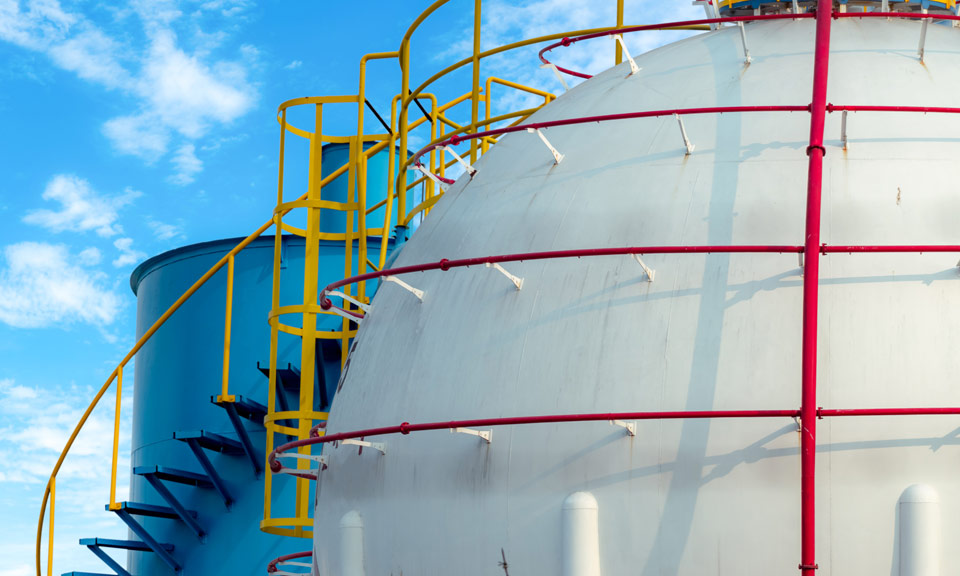US light-duty EVs surpass rail electricity consumption for the first time

Light-duty electric vehicles consumed more electricity than rail systems across the US for the first time in 2023, the US Energy Information Administration said May 20.
US EV sales have risen in recent years with light-duty EVs accounting for 16% of all LDVs in 2023, according to the EIA.
"Annual electricity consumption by railways has been the largest electricity end-use category in the transportation sector published in the Electric Power Monthly since 2003, stable for the past two decades and averaging about 7,000 GWh," the EIA said. "The US has had only limited expansion of municipal railway systems or electrified passenger rail during that period."
The number of battery electric vehicle model options have increased as their prices have declined, according to the EIA. In 2023, BEVs accounted for 72% of overall electricity consumption by EVs.
"Estimated annual electricity consumption by EVs grew to 7,596 GWh in 2023, almost five times the consumption in 2018," the EIA said, adding the shares of electricity consumed by BEVs and by plug-in hybrid electric vehicles were about the same in 2018.
US to overtake Europe
The US plug-in EV market wrapped up 2023 with a total of 1.4 million units sold in 2023, a 54% year-over-year increase, Suzanna Massingue, a low-carbon transportation analyst with S&P Global, said May 20.
"Growth is expected to continue in 2024, with annual sales forecast to reach 1.6 million sales this year," Massingue said. "Future growth will be driven by incentives brought by the Inflation Reduction Act, such as tax credits for buying eligible electric vehicles, as well as tailpipe emission standards recently finalized by the Environmental Protection Agency."
By the end of the decade, EV sales are forecast to reach 5.5 million, accounting for one in three light duty vehicles sold, she added. S&P Commodity Insights expects that the US EV market will grow to become the second largest globally, forecast to overtake Europe in 10 years, driven by the size of the automotive market, population and levels of wealth.
West is the best
The Pacific Census Division consumed the most electricity by EVs in any region of the US in 2023 with 40% of the total, according to the EIA. The South Atlantic Census Division had the second-most consumption at 15.5%, while Middle Atlantic Census Division was third with 8.8%.
California accounts for about 85% of electricity consumption by LDVs in the contiguous part of the Pacific Census Division, according to the EIA. California has the highest concentration of EVs of any state in the US, and therefore California EVs consume more electricity than in any other state. In 2023, 33.9% of US EV electricity consumption was in California, followed by Florida at 6.0%.
The US presents differing rates of EV adoption across the country, with California leading in terms of plug-in EV sales and stock, Massingue said.
"This can be greatly attributed to the progressive policy and incentives available, extensive investment in charging infrastructure and the Low Carbon Fuel Standard which aims to reduce transport related greenhouse gas emissions," Massingue said. "Additionally, the California Air Resources Board has also voted to ban the sale of new internal combustion engine passenger vehicles in the state by 2035, with the interim goal of 35% of new passenger vehicles to be zero-emission vehicles by 2026 and 68 by 2030."
California reached a zero-emission vehicle milestone in second quarter 2023 with 125,939 ZEVs sold, accounting for 25.4% of all new car sales in the state. California ZEV sales reached a Q1 record with 102,507 sold in Q1 2024, rebounding from a 14% quarter-on-quarter drop in Q4 2023.
The EIA recently started publishing experimental estimates for light-duty vehicle electricity consumption, which are not collected on its traditional surveys but are derived using a model. The EIA compared the estimates with consumption data from electric utilities that report transportation sector end use, which is almost only municipal and regional rail systems.
The EIA's new estimates of LDV electricity consumption are based on models and subject to model error.
"We are releasing these new estimates to solicit comments by email on the potential uses of the data, the methodology, and possible enhancements," the EIA said.

News
(Latest update June 10, 2024) The United States' diverse power market environment has certain common fundamentals such as current prices' influence on forward prices, the cost of inputs such as natural gas, the generation mix, weather and power demand. Cold snaps in winter and heat waves in summer drive up demand along with power prices. Hurricanes and intermittent renewable power growth can raise energy demand, reliability and price risk. For access to all regions of the US Power Tracker series, subscribe to Platts Connect . Full feature: US POWER TRACKER: PJM forward prices mostly rise heading into summer (subscriber content)

News
From 2015 to 2023, the worldwide deployment of clean energy resources grew from 120 GW/year to 530 GW/year. By 2035, the reference outlook of S&P Global Commodity Insights sees this figure reach 730 GW/year. This evolution is transforming power market operations worldwide, stimulating the sector's supply chains, and advancing the global effort to decarbonize. Commodity Insights recently published a report analyzing how the build-out of renewables is expected to grow rapidly in the coming decades, how the mix of resources for power generation will trend toward more clean energies, and how power sector emissions will vary substantially across major markets. Here is a portion of the discussion topics and a summary of five trends that will define power markets worldwide between now and 2035. 1. Global power demand will increase by a third in the next 10 years Economic growth in the emerging markets and electrification -- including data center demand -- will drive the bulk of new electricity consumption, dampened by increasing energy efficiency efforts. The Asia-Pacific region alone, with its strong industrial base, will capture 66% of overall demand growth. 2. Renewables will capture nearly 90% of all new power generation capacity globally, becoming a dominant source of power by 2035 Renewables will grow by over 740 GW annually between now and 2035. Carbon-free resources, such as renewables plus hydro, nuclear and batteries, will account for 70% of all installed generation capacity in 2035. Solar and wind capacity will make up most clean energy additions, growing by 5.9 TW and 1.9 TW, respectively, between now and 2035. Electricity storage capacity -- a critical source of grid flexibility enabling the renewables deployments -- is expected to expand by 30% per year during the period. 3. Conventional thermal fuels will still make up 35% of global generation and 30% of installed capacity by 2035 Natural gas will play an important role as a baseload source of power and as a flexible resource providing reliability to power systems. In emerging markets in particular, rapid demand growth will drive more additions of conventional resources, mainly natural gas. Over 2024-35, natural gas will add 47 GW/year globally and on a net basis. Coal generation, on the other hand, will be in net decline everywhere except India and a few smaller markets. 4. Investment in renewables, battery storage and hydrogen electrolyzers will average $775 billion annually between now and 2030 -- or about 40% above 2023 levels -- in real terms Large regional variations will exist in investment levels, resulting from differences in resource endowment, energy security concerns, policy initiatives including incentives and supply chain localization requirements and the ability to attract financing. The rapidly growing Asia-Pacific region will capture about 46% of the investment total, Europe another 26% and North America 16%. Utility-scale and distributed solar projects will represent almost 40% of investments. The cost of clean energies per megawatt will fall. 5. Global power generation will emit 10% less CO2 in 2035 than it does today The emissions reductions are driven mainly by coal retirements in Europe and North America, a slowdown in coal generation in China, and the widespread penetration of clean energies. This reduction is insufficient, however, to position the world toward meeting its long-term climate goals. with analysis from Francesco D'Avack The information summarized in this video is sourced from the Global Power and Renewables service and the Clean Energy Technology service , both part of S&P Global Commodity Insights.

News
Results of India’s 18th general elections are scheduled for June 4, with the new government facing a formidable task of providing affordable, stable and clean energy supplies that could be achieved by increasing the role of natural gas in the country's primary energy mix, among other steps. The country has already set a target for natural gas to achieve a 15% share of the energy mix by 2030, a challenging task given that the current share hovers around 6%-7%, according to industry estimates. Accelerated gas market reforms, increased gas-fired generation reflecting power market improvements and speeding up infrastructure are some steps that would aid the country's ambitions of becoming a gas-based economy. Click here for the full-size infographic

News
Arcelor Mittal Nippon Steel India has signed a deal with Shell for the supply of 500,000 mt/year of LNG starting from 2027 for 10 years, at an 11.5% slope to crude oil, sources told S&P Global Commodity Insights May 23. This marks the first deal priced below 12% slope to crude oil since Europe switched to consuming LNG after reducing pipeline gas consumption from Russia following its invasion of Ukraine. The deal involves certain flexibilities that the seller can exercise, such as one additional cargo per year, sources said. "The contract is signed for 10 years for 500,000 mt/year starting in 2027 and there is no DQT (downward quantity tolerance)," one of the sources said. Sources added that the deal was likely to include some flexibility around deliveries at the Hazira LNG terminal. Official spokespersons for Arcelor Mittal Nippon Steel India and Shell did not respond to queries at the time of writing. Below 12% slope After Russia's invasion of Ukraine, the LNG market was focused on energy security. As global LNG markets adjusted to the change and spot prices eased from the record high seen in 2022, affordability has become an important component of energy security for South Asian and Southeast Asian buyers. A Singapore-based source said the news was big because, with this deal, it seemed that the market has corrected below 12% slope to crude oil. A Europe-based source said the price was understandable if there was some flexibility afforded in the deal for the supplier. LNG buyers have been negotiating hard to lower oil-linked price slopes for long-term contracts as market participants expect additional volumes from the US and Qatar to be made available later this decade. The expectation of additional supply being available from 2025 onward has put pressure on long-term pricing slopes, especially as LNG spot prices have eased from the elevated levels seen in 2022 and early 2023. Platts assessed the West India Marker, the benchmark price for LNG cargoes delivered to west India ports and the Middle East, for July at $11.163/MMBtu on May 21, according to S&P Global Commodity Insights data. According to the forward curve on May 21, the WIM derivative for calendar year 2027 was assessed at $9.675/MMBtu.